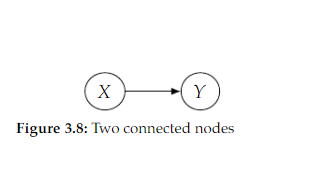Edited, memorised or added to reading queue
on 21-Jul-2023 (Fri)
Do you want BuboFlash to help you learning these things? Click here to log in or create user.
| status | not read | reprioritisations | ||
|---|---|---|---|---|
| last reprioritisation on | suggested re-reading day | |||
| started reading on | finished reading on |
Parent (intermediate) annotation
Open ithierarchical GAN Data processing¶ The first step in data processing is to remove all personally identifiable information — like names and addresses — and any free-text fields. We end up with the following attributes for the parent and child components: | | | | | --- | --- | --- |Parent attributes | Name | Type | Description | | Employee_id | Categorical | 78 levels | | order_date | Datetime | 1996-1998 | | required_date | Datetime | 1996-1998 | | shipped_date | Datetime | 1996-1998 | | ship_via | Categorical | 3 levels | | freight | Numerical | [0.02 - 1007] | | ship_region | Categorical | 19 levels | | ship_country | Categorical | 21 levels | | customer_city | Categorical | 70 levels | | customer_region | Categorical | 19 levels | | customer_country | Categorical | 21 levels | | order_lenght | Numerical | [1 - 22] | | | | | | --- | --- | --- |Table 3: Child attributes Name Type Description product_id Categorical 77 levels supplier_id Categorical 29 levels category_id Categorical 8 levels unit_price Numerical [2 - 263.5] quantity_per_unit Numerical [0 - 70] All data is converted into a one-hot encoding, including datetime and numerical types (previously binned into 20 levels). One-hot encoding converts categorical variables (occupation, city names, etc) into a numeric format to be ingested by machine learning algorithms. The final generated tabular data is converted back into tables to recreate the original database
Original toplevel document (pdf)
cannot see any pdfs| status | not read | reprioritisations | ||
|---|---|---|---|---|
| last reprioritisation on | suggested re-reading day | |||
| started reading on | finished reading on |
Parent (intermediate) annotation
Open itely do away with the complicated and time-consuming step of feature engineering, even when applied to highly structured problems such as predicting the future behaviors of a panel of customers. <span>We apply the LSTM neural networks to predict customer responses in direct marketing and discuss its possible application in other contexts within marketing, such as market-share forecasting using scanner data, churn prediction, or predictions using clickstream data <span>
Original toplevel document (pdf)
cannot see any pdfs| status | not read | reprioritisations | ||
|---|---|---|---|---|
| last reprioritisation on | suggested re-reading day | |||
| started reading on | finished reading on |
Parent (intermediate) annotation
Open itBuilding on the structural approach to causality introduced by Haavelmo (1943) and the graph-theoretic framework proposed by Pearl (1995), the artificial intelligence (AI) literature has developed a wide array of techniques for causal learning that allow leveraging information from various imperfect, heterogeneous, and biased data sources (Bareinboim and Pearl, 2016)
Original toplevel document (pdf)
cannot see any pdfsFlashcard 7583430741260
| status | not learned | measured difficulty | 37% [default] | last interval [days] | |||
|---|---|---|---|---|---|---|---|
| repetition number in this series | 0 | memorised on | scheduled repetition | ||||
| scheduled repetition interval | last repetition or drill |
Parent (intermediate) annotation
Open itsupplier_id Categorical 29 levels category_id Categorical 8 levels unit_price Numerical [2 - 263.5] quantity_per_unit Numerical [0 - 70] All data is converted into a one-hot encoding, including <span>datetime and numerical types (previously binned into 20 levels). <span>
Original toplevel document (pdf)
cannot see any pdfsFlashcard 7583432838412
| status | not learned | measured difficulty | 37% [default] | last interval [days] | |||
|---|---|---|---|---|---|---|---|
| repetition number in this series | 0 | memorised on | scheduled repetition | ||||
| scheduled repetition interval | last repetition or drill |
Parent (intermediate) annotation
Open it𝑃(𝑥, 𝑦) as 𝑃(𝑥)𝑃(𝑦|𝑥) , but it would also allow us to factorize 𝑃(𝑥, 𝑦) as 𝑃(𝑥)𝑃(𝑦) , meaning it allows distributions where 𝑋 and 𝑌 are independent. In contrast, the minimality assumption does <span>not allow this additional independence <span>
Original toplevel document (pdf)
cannot see any pdfsFlashcard 7583434673420
| status | not learned | measured difficulty | 37% [default] | last interval [days] | |||
|---|---|---|---|---|---|---|---|
| repetition number in this series | 0 | memorised on | scheduled repetition | ||||
| scheduled repetition interval | last repetition or drill |
Parent (intermediate) annotation
Open itThe Stacked LSTM is a model that has multiple hidden LSTM layers where each layer contains multiple memory cells.
Original toplevel document (pdf)
cannot see any pdfsFlashcard 7583436508428
| status | not learned | measured difficulty | 37% [default] | last interval [days] | |||
|---|---|---|---|---|---|---|---|
| repetition number in this series | 0 | memorised on | scheduled repetition | ||||
| scheduled repetition interval | last repetition or drill |
Parent (intermediate) annotation
Open itThe internal state in LSTM layers is also accumulated when evaluating a network and when making predictions
